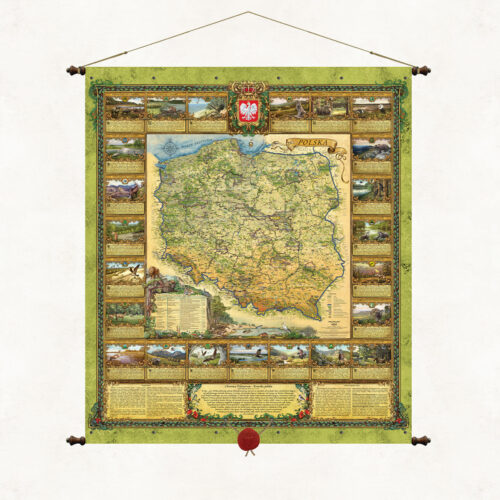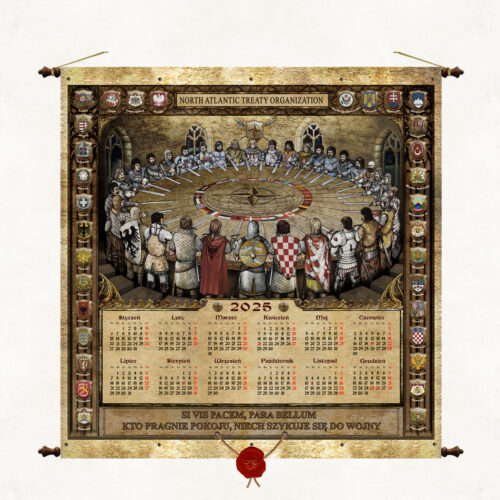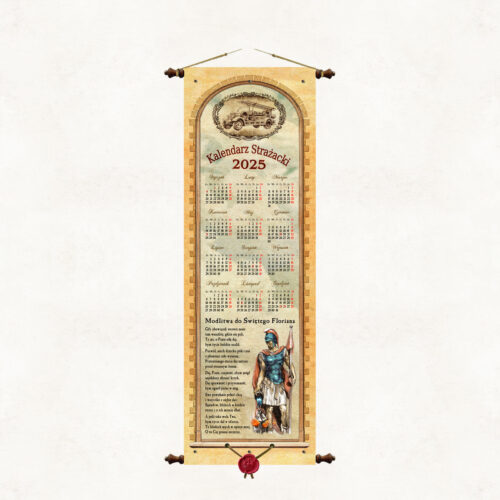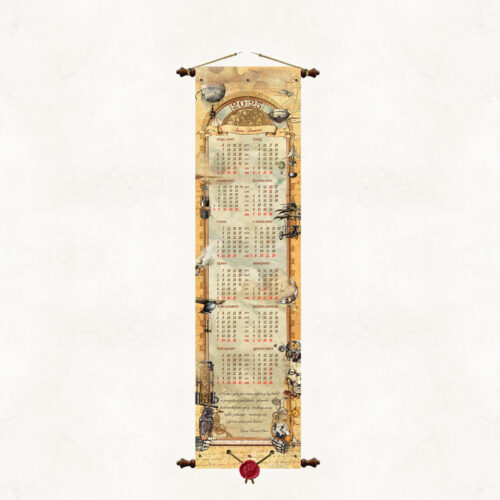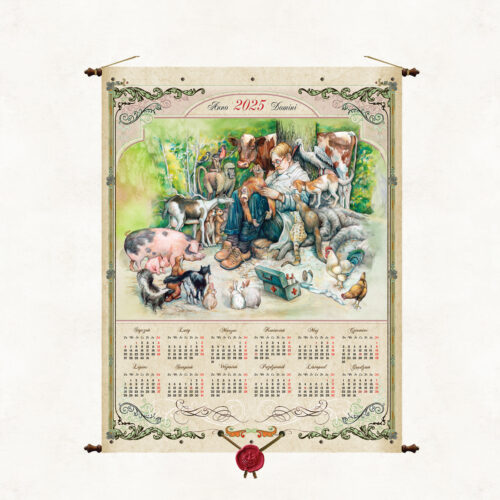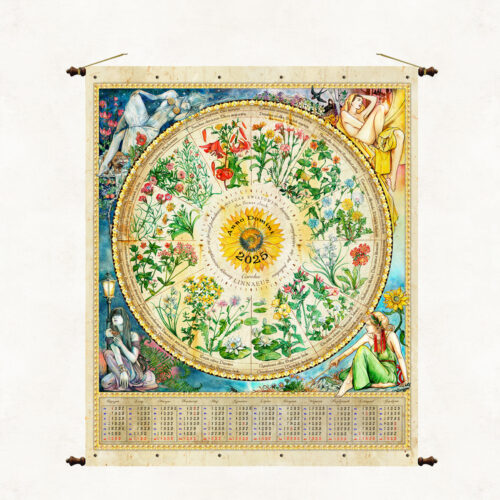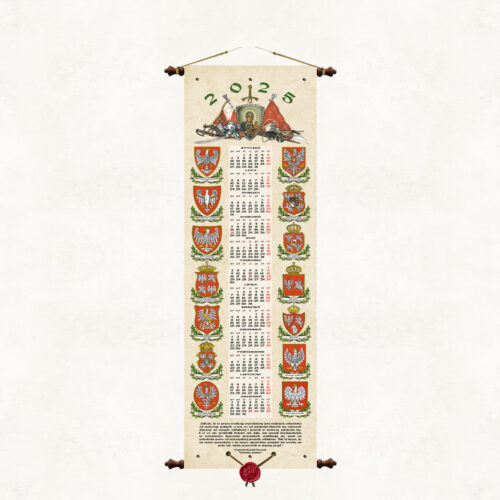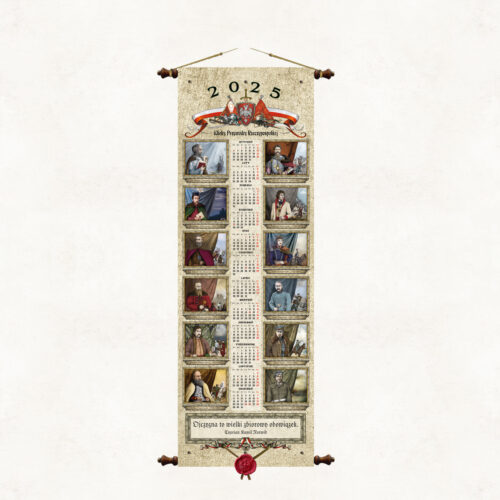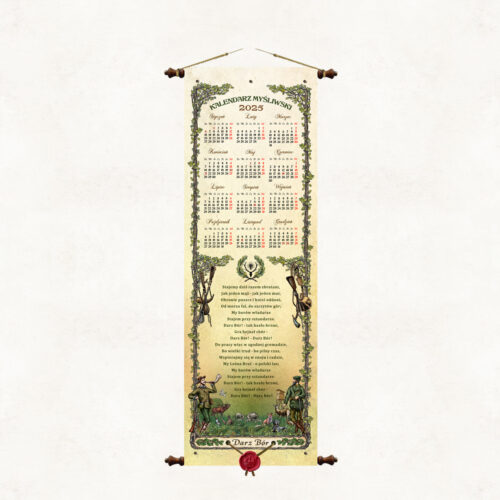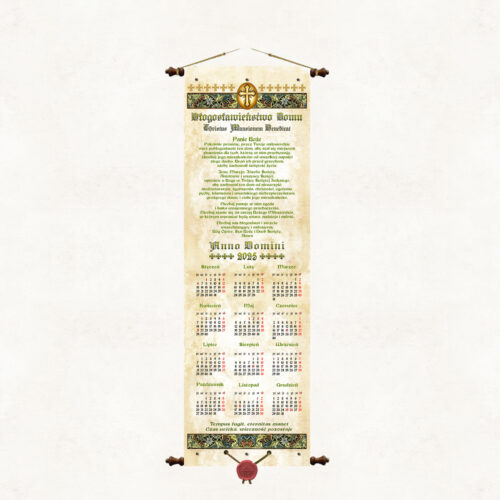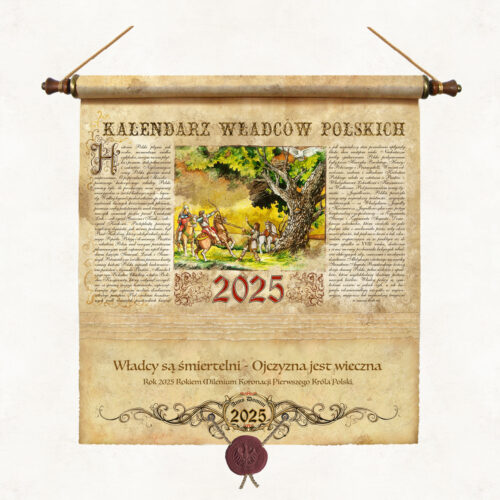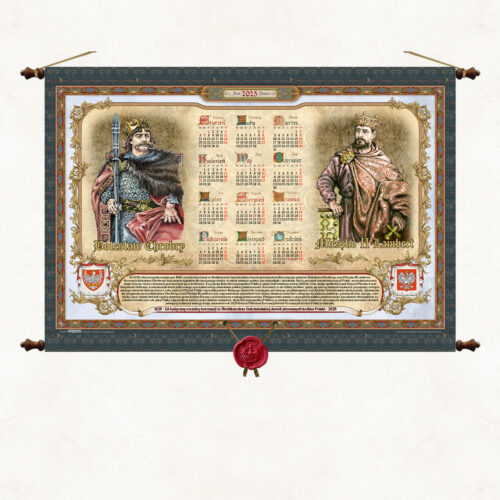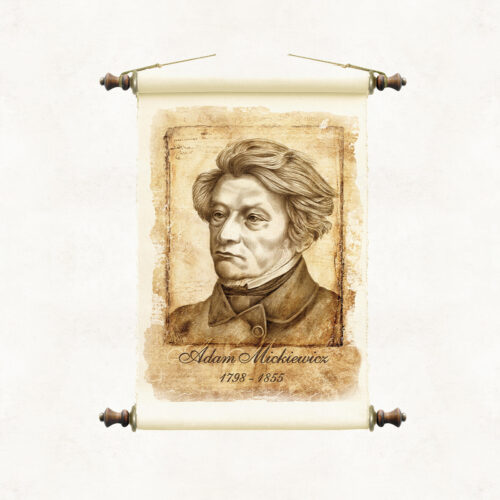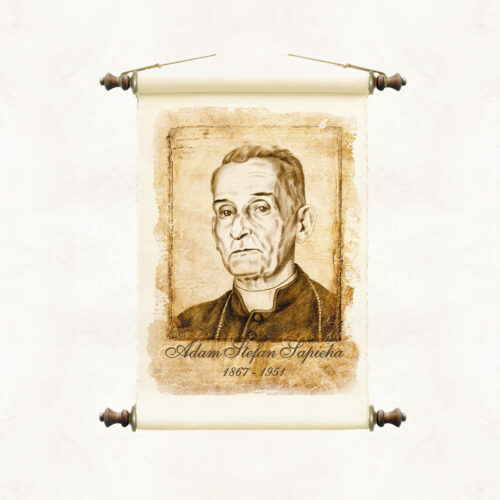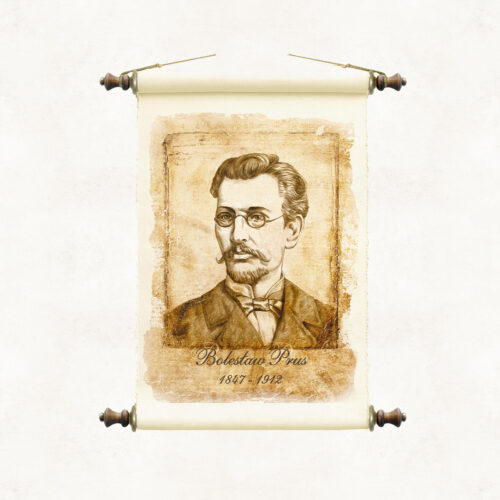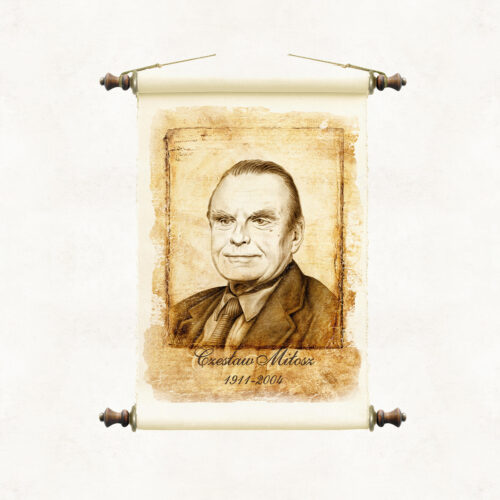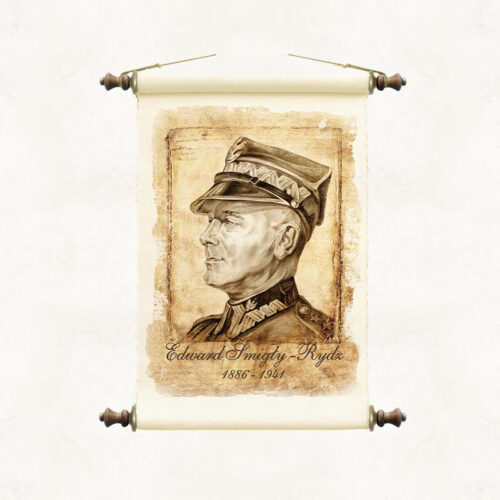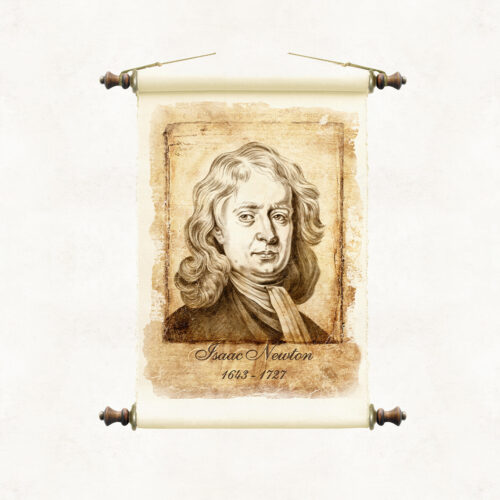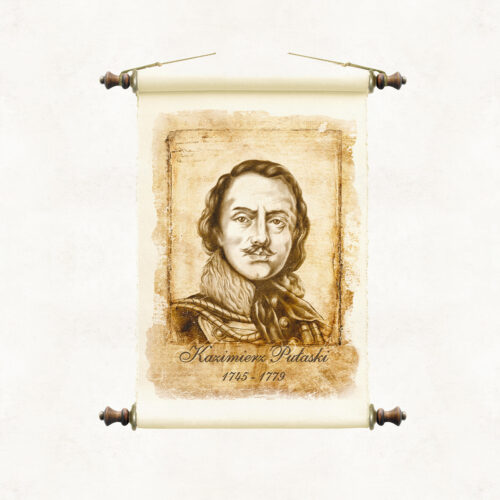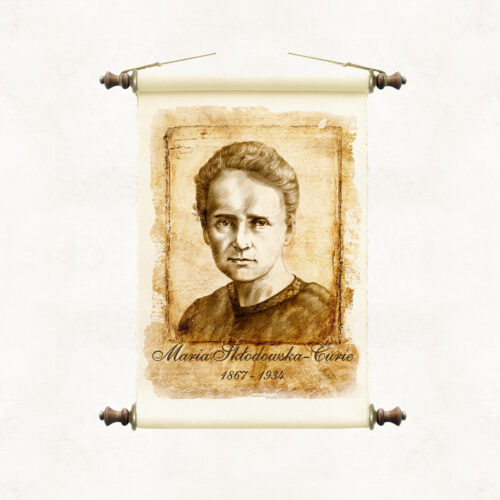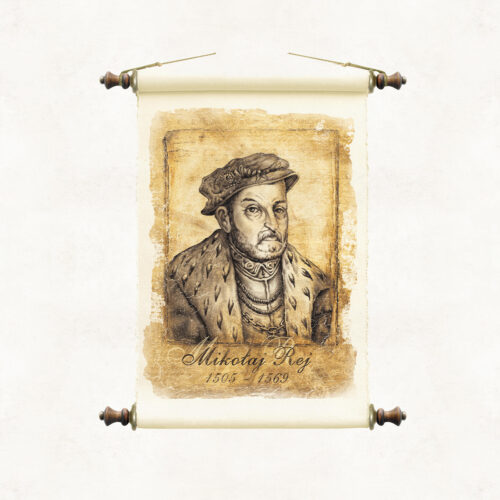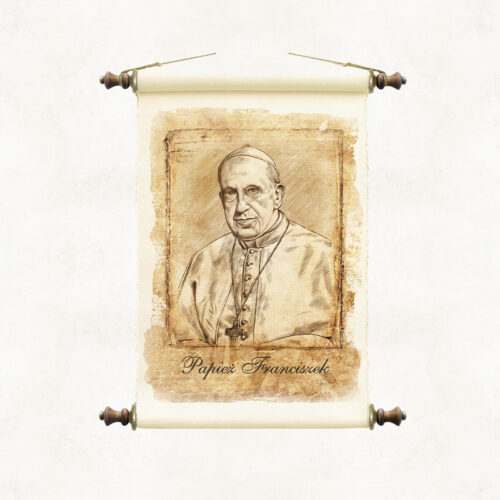-
A map of Canada, or rather a map of North America. A publication commissioned by the Polish Olympic Committee for the XXI Winter Olympic Games, which took place in the Canadian city of Vancouver on 12–28 February 2010. This is another in a series of Olympic maps. The map frames and cartouches refer stylistically to the totemic culture of the North American Indians. The upper part of the publication shows a winter view of the Rocky Mountains region, where the games were held, the lower part shows the panorama of the city of Vancouver.
-
This is a unique map on our publishing market. In addition to its classic cartographic content, it also presents a unique landscape image of Poland. We have combined two complementary views on one map. Our artists have painted Poland “from an eagle’s eye view” to illustrate the beauty of our homeland and its assets. Wanting to show the Polish mountains in a clear perspective, we have reversed the observer’s position to the north. We have marked the panorama with the most important cities, monuments, rivers, and forests. This is how this unique and practical landscape publication was created.
-
A unique map filled with oriental style illustrates both the cartographic image of China and the specific nature and culture of the center country and its cantons. At the bottom of the map is one of the most recognizable symbols of China, the Square of Heavenly Peace (Tiananmen Square). The side frames show the most famous monuments and symbols of Chinese culture and tradition. The publication is bound on wooden poles with decorative tips and topped with a suspended Chinese wax seal. The publication belongs to a series of maps created at the request of the Polish Olympic Committee. It was made in 2008 for the XXIX Summer Olympic Games, which took place in Beijing, the capital of China.
-
A map of the Rudziniec Forest District, one of 38 forest districts that form part of the Regional Directorate of State Forests in Katowice. The map presents a brief description of the forest district, forest divisions and forest habitat types.
-
"Poland is a land of ancient primeval forests and thousands of lakes spread on hills and plains between the Baltic Sea and the high Tatra Mountains. History has endowed our country with a unique place on Earth, thanks to which beautiful Polish landscapes four times a year undergo extraordinary metamorphoses delighting with the dynamics of nature, its unusual colors and moods." The map “Nature of Poland” is a publcation unique and beautiful, full of images and symbols of the natural heritage of our country. It is a map - sanctuaries of Polish nature, which should, like the works of Mickiewicz, go under thatched roofs to give and strengthen in us a sense of connection with nature and responsibility for it. Maintained in the convention of old cartographic works, it tells about the treasures of nature that have survived to our time. It presents in decorative cartouches business cards of Polish national parks, gives the most important natural and geographical information about Poland, describes the forms of environmental protection used in our country, beautifully promotes Polish nature. Wishing to popularize the natural beauty of our country, we have published two twin maps, “Nature of Poland” and “Forests of Poland”, which in a complementary way present the overall resource of Polish nature. National parks are the mothers of Polish flora and fauna, but they are not a separate and independent natural creation, they are part of our natural environment, which includes many components such as forests, landscape parks, areas of protected landscape, agricultural land and, of course, water. National parks account for only 1% of our country's land area. The remaining 29% is made up of forest areas owned by the State Forestry Service.
-
A publication dedicated to soldiers and all defenders of freedom and peace gathered around the North Atlantic Treaty Organization (NATO). In an allegorical illustration referring to the Arthurian legend of the Knights of the Round Table, we have shown representatives of NATO member states stylized as knights. The motto of the calendar is a Latin proverb, paraphrased from the prologue to the work On the Art of War by Vegetius, a Roman historian from the 4th century AD Si vis pacem, para bellum – “If you want peace, prepare for war”. In the cartouches forming the frame of the image, we have placed the emblems of NATO countries.
-
A stylized "herbal" calendar reminiscent of the famous Hippocratic maxim - Your food should be your medicine and your medicine your food. Referring to Hippocrates' dietary advice, we have placed on the board a description of the most important medicinal herbs along with their illustrations and drawings by Leonardo da Vinci from around 1490. The main illustration is the Vitruvian Man. The work is a revision of Vitruvius' concept of the proportions of the human body. The Vitruvian Man is Leonardo's most famous drawing, considered a symbol of combining art with science.
-
A publication dedicated to veterinarians and all those sensitive to animal suffering. In an allegorical illustration, we have presented a veterinarian during an operation on a sick animal. Around the veterinarian, various species of animals (potential patients) are gathered, experiencing with compassion this painful situation for the monkey.
-
A charming composition of flowers and symbols creating a stylized clock face painted by the famous Silesian artist and illustrator Jarek Nocoń, shows the most important species of plants used in creating a natural flower clock. In the corners we placed allegorical female figures symbolizing the seasons. A flower clock is an original idea of using the natural properties of plants to measure time. This unconventional timepiece is based on the observation of the life cycle of flowers, which open and close their petals at specific times of the day. This idea uses the circadian rhythms of plants, which are naturally synchronized with the rhythms of the environment, mainly with changes in sunlight. The idea of creating a flower clock comes from the observation of the natural behavior of plants by the famous botanist, Carl Linnaeus. In the 18th century, Linnaeus noticed that different species of plants open their flowers at fixed and predictable times of the day, which inspired him to use these phenomena in practice to measure time.
-
Patriotic and educational calendar, compendium of national symbols. It presents a historical outline of the evolution of the Polish emblem, the prophetic message of Cyprian Kamil Norwid indicating the significance of tradition in the history of the nation. We produce the publication in various sizes depending on the needs of the recipient.
-
A calendar dedicated to foresters and hunters with the text of their informal anthem titled "Darz Bór". The song was written in 1920 by forester engineer Stanisław Wyrwiński. In it, he used a phrase of his own creation, which is popular today among Polish foresters and hunters, greeting - Darz Bór.
-
An original calendar with a beautiful prayer for the blessing of a house and its inhabitants, beginning with the Latin sentence Christus mansionem benedicat ("May Christ bless this house"). Receiving and giving a blessing is one of the most important aspects of the religious life of Christians. The prayer for a Blessing is words equipped with effective spiritual power, thanks to which an individual or a community feels strengthened and safe, free from fear and resistant to the influence of evil. A blessing is a gift from God, from whom all good comes, it is a tangible manifestation and confirmation of His life-giving presence in the world and His favor towards those who trust Him. Our publication is a beautiful testimony of faith.
-
The rulers are mortal - The homeland is eternal 14-page calendar of the Rulers of Poland – Millennium souvenir of the coronation of the first king of Poland, Bolesław Chrobry This is an exceptional publication, its form, content and the idea it serves make it deserve the title of a millennium souvenir in every respect. This great anniversary has become an opportunity for us to present the topic of Polish rulers in a comprehensive form in the form of a unique calendar – album. Following the drawings from the Collection of Polish Kings and Princes by Jan Matejko, we have created our own original collection of 48 colour portraits of Polish rulers, supplemented with figures that Master Matejko did not draw. Each month's page features images of four historical figures with short biographies. The year 2025 will mark the thousandth anniversary of the coronation in Gniezno of two Polish kings, Bolesław the Brave and his son Mieszko II Lambert. The coronation of the first Polish king, Bolesław the Brave, took place in the Gniezno cathedral most likely on Easter, which then fell on April 18. Two months later, Chrobry died and his son Mieszko II took over the inheritance. The coronation ceremony took place the same year on Christmas, also in Gniezno.
-
A publication dedicated to the thousandth anniversary of the coronation of the first two kings of Poland. In 2025, there will be a unique, 1000th anniversary of the coronation in the Archcathedral of Gniezno of the first two kings of our country: Bolesław the Brave and Mieszko II Lambert. The coronation of Bolesław the Brave was a clear signal to the world of that time that the young Polish state was independent and sovereign. It was the beginning of the growth of Poland's position on the medieval map of Europe, which transformed from a principality into a kingdom. On this occasion, the Sejm of the Republic of Poland pays tribute to the rulers who, 1000 years ago, being the heirs of Prince Mieszko I and Princess Dobrawa, continued the work of political and cultural strengthening of Polish statehood. These coronations would not have been possible if not for a number of important events, starting with the legendary foundation of Gniezno by Lech, through the Baptism of Poland, the martyrdom of Saint Adalbert and the establishment of the first archbishopric, and ending with the Congress of Gniezno. The commemoration of the accession to the throne of Bolesław the Brave and Mieszko II Lambert is a remembrance of all those who, gathered around the idea of the emerging Polish state, devoted time, energy, and sometimes even their lives, so that today we would be part of the proud group of European countries with a centuries-old tradition of statehood. Cultivating the memory of the beginnings of Polish statehood is our duty, and it is also a testimony to the role that Poland has played in the world over the past millennium. The Sejm of the Republic of Poland, in recognition of the significance of these events, resulting in the establishment of the first dynasty to rule in the history of our country, establishes the year 2025 as the Millennium Year of the Coronation of the First Two Kings of Poland in Gniezno.





